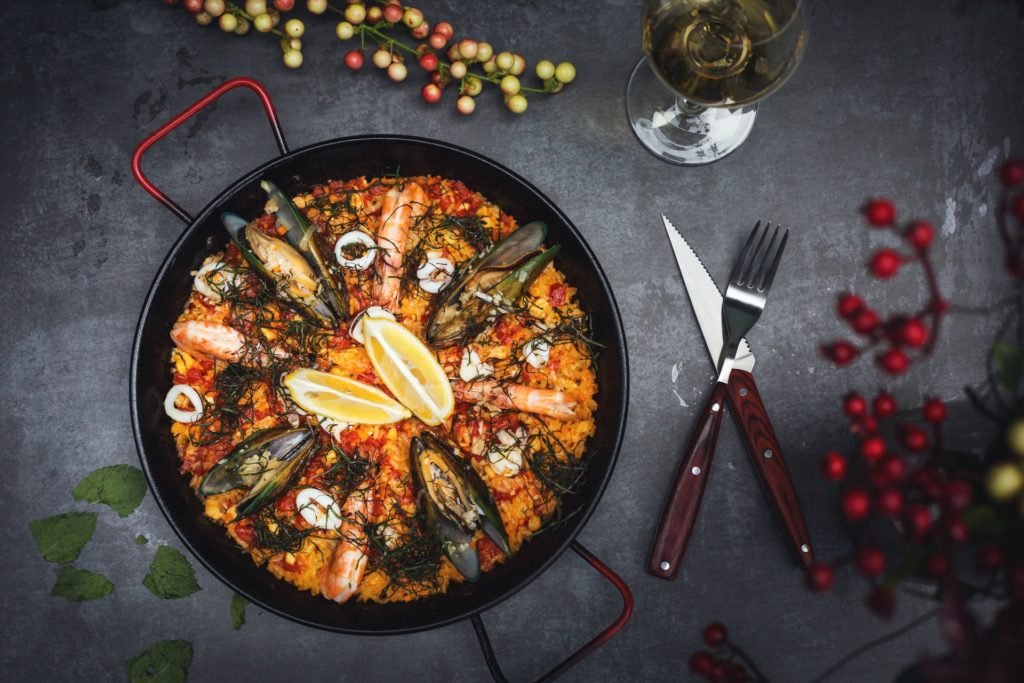Mistakes When Cooking With A Frozen Seafood Mix:
Let’s be honest – seafood isn’t the cheapest source of protein out there. For some frugal home cooks, it’s not practical to buy a variety of fresh seafood all at once just to make a nice Paella or Frutti de Mare pasta for an ordinary Wednesday dinner. We often associate mixed seafood dishes with holidays and special occasions that call for a festive banquet.
If the mixed seafood cravings can’t be tamed, thrifty shoppers opt for the second-best thing: frozen mixed seafood packs. They buy these packs, hoping they’re decent enough to be at par with their grandma’s signature seafood stew recipe. They’re cheap and they contain all of your favorite shellfish options. What could go wrong? Well, if you don’t use them well, you’ll end up with a rubbery, fishy mess.
So if you’ve used them in the past, failed, and swore not to buy them again, listen up: you can make them work! Just make sure to avoid the following common mistakes when cooking frozen mixed seafood. Are you guilty of some of them?
Mistake #1: Defrosting in hot water
Pouring hot water over your frozen seafood might be a fast way to defrost but it leads to consistency discrepancies. You can have a piece that’s perfectly defrosted on one side, while the other side is still frozen solid. For best results, use cold water and wait for your seafood to properly thaw out.
You can also thaw your seafood in cooler temperatures slowly instead of leaving them at room temperature. Transfer the frozen seafood into a bowl, cover it with plastic wrap, and place them in the refrigerator for hours until they’re already defrosted. This will prevent spoilage.
Mistake #2: Overcooking
You know how overdone seafood looks like: tough, rubbery, and shrunk. Squid rings, for example, are tricky to cook. A minute or two past their suggested cooking time and you’ll end up with tough and chewy rings.
Here are golden rules for cooking seafood:
- Squid/octopus rings: Cook on high heat for 60-90 seconds. Any time beyond 2 minutes can lead to rubbery squid. You can re-tenderize rubbery squid by braising it for 20-30 minutes.
- Shrimp: Cook them for 3 minutes, flipping them halfway through the cooking time. Remove them from heat right when the shrimp is uniformly orange, with no brown or gray spots. Make sure the shrimp has a loose C-shape, not a tight and curled C-shape, which is a telltale sign it’s tough and overcooked.
- Scallops: Sear them for 3 to 5 minutes, undisturbed, until the bottom is brown. Flip them, lower the heat, and cook them for another 2-5 minutes.
- Oysters, mussels, and clams: 3-10 minutes (depending on the size) until the shells open, indicating that they’re cooked.
- Fish fillets: 10 minutes until the fish appears opaque. Flip the fillet halfway through the cooking time.
Just be mindful that your mixed seafood pack is likely precooked so you’ll need to adjust the cooking time to avoid overcooking them.
Mistake #3: Putting them all at once
Have you ever had a mixed seafood dish before wherein some of the ingredients are plump and tasty while others are tough and rubbery?
It’s because different seafood items need to be cooked at different amounts of time. Sort the mixed seafood by type, prep them individually, and add each to the pot/grill them at an appropriate time.
Mistake #4: Adding seafood first
Shellfish variants are delicate. They cook fast, so make sure to add them last after going with the rest of your recipe. If they’ve been defrosted properly, the residual heat from the rest of the sauteé will be enough to get your dish to the right temperature. If you add pre-cooked seafood first, there’ll be a tendency to overcook them.
Mistake #5: Forgetting to season your seafood
Just because your mixed seafood is precooked doesn’t mean they’re pre-seasoned as well. You can punch up by a pinch of salt and pepper, plus your favorite herbs and spices.
Mistake #6: Not buying quality ingredients
If you’re shopping for fresh seafood, you probably have a notion of whether they’re high quality or not just by looking, touching, and smelling them. But what if you’re buying mixed seafood that’s cramped in a sealed plastic bag?
Label matters. Make sure you’re getting your mixed seafood pack from a well-known brand or they’re sold by a reputable seafood market.
Mistake #7: Using Oven
Using dry heat (oven) as your source of heat is one of the worst ways to prepare pre-cooked shellfish or fish. You’ll end up overcooking them. If you’re planning to cook assorted seafood from a package, you’re better off boiling, grilling, and frying them.
Author Bio: Carmina Natividad is a passionate daytime writer for Manettas Seafood Market, an online and interactive seafood hub which provides customers a true, first-class fish market experience without leaving home. Since she’s a seafood lover herself, she’s got a lot to say about food, well-being, and lifestyle.


